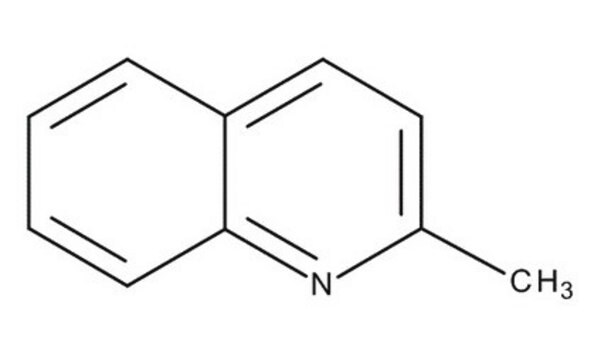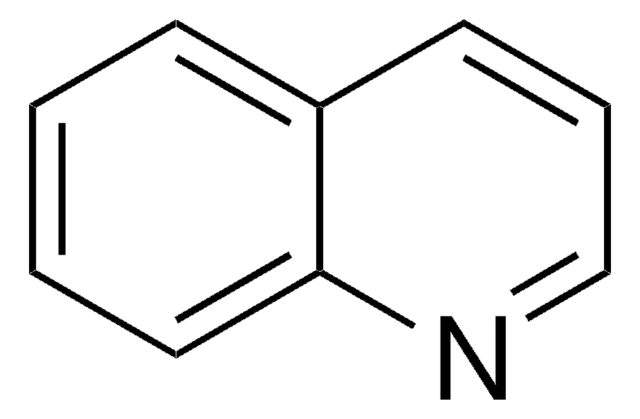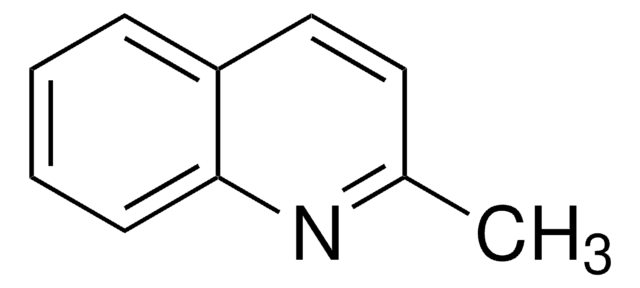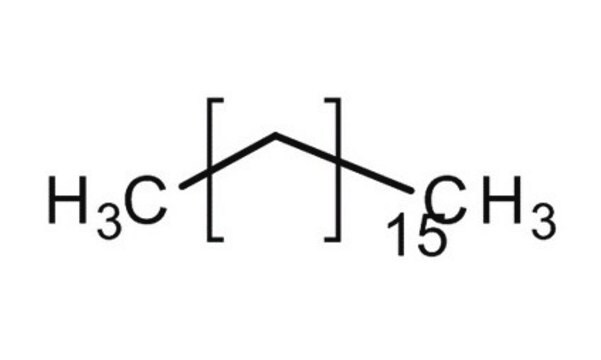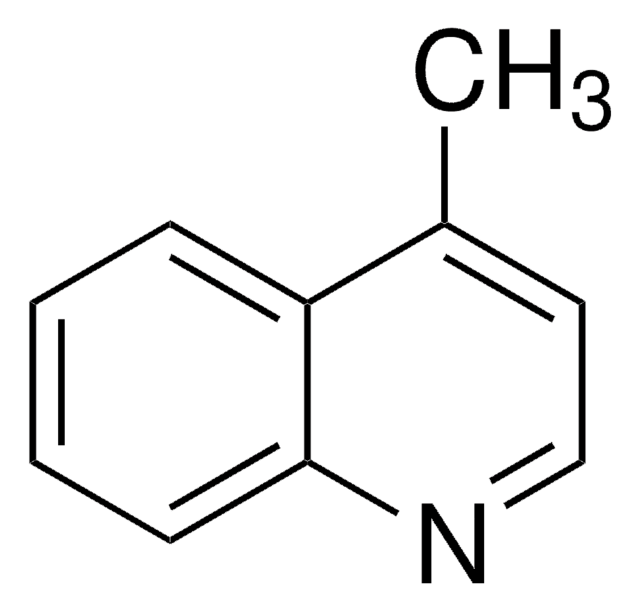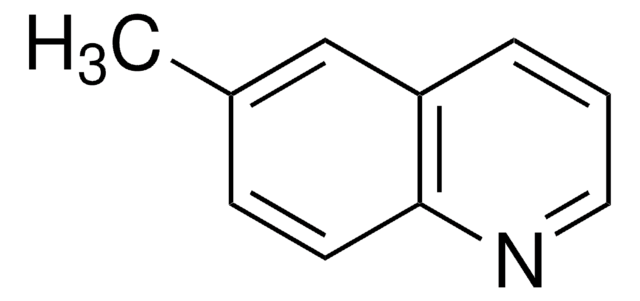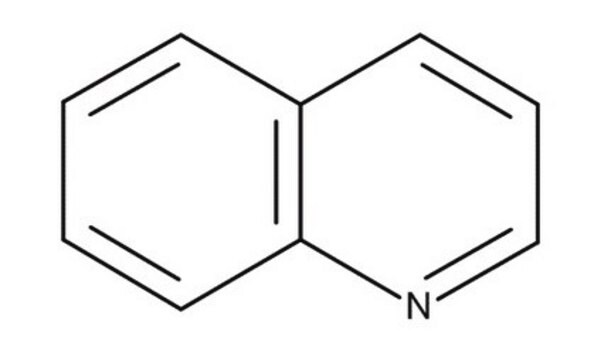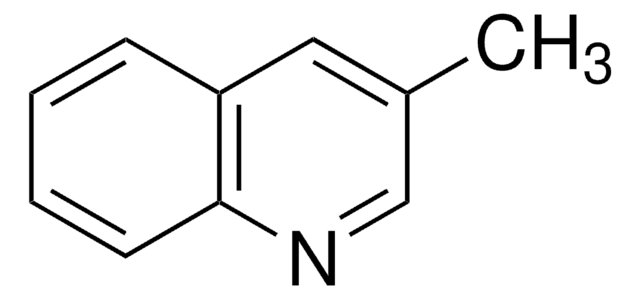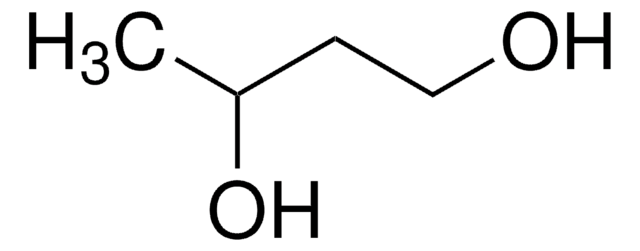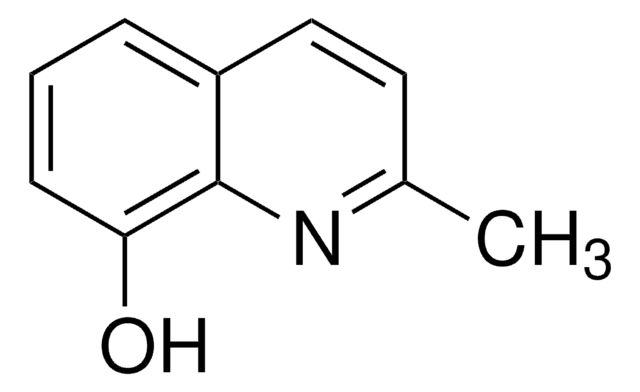22550
Quinaldine
≥95.0% (GC)
Sinónimos:
2-Methylquinoline
About This Item
Productos recomendados
Ensayo
≥95.0% (GC)
Formulario
liquid
índice de refracción
n20/D 1.612 (lit.)
bp
105-107 °C/10 mmHg (lit.)
248 °C (lit.)
mp
−9-−3 °C (lit.)
solubilidad
chloroform: soluble(lit.)
diethyl ether: soluble(lit.)
water: insoluble(lit.)
densidad
1.058 g/mL at 25 °C (lit.)
cadena SMILES
Cc1ccc2ccccc2n1
InChI
1S/C10H9N/c1-8-6-7-9-4-2-3-5-10(9)11-8/h2-7H,1H3
Clave InChI
SMUQFGGVLNAIOZ-UHFFFAOYSA-N
Información sobre el gen
human ... CYP1A2(1544)
¿Está buscando productos similares? Visita Guía de comparación de productos
Descripción general
Aplicación
- In the preparation of squaraine dyes (quinaldine-based squaraine dyes) which is biologically significant and can be used as an metal ion sensor.
- To prepare the pH sensitive colorimetric chemo sensors.
Características y beneficios
Precaución
Palabra de señalización
Warning
Frases de peligro
Consejos de prudencia
Clasificaciones de peligro
Acute Tox. 4 Dermal - Acute Tox. 4 Oral - Aquatic Chronic 3 - Eye Irrit. 2 - Muta. 2 - Skin Irrit. 2
Código de clase de almacenamiento
10 - Combustible liquids
Clase de riesgo para el agua (WGK)
WGK 3
Punto de inflamabilidad (°F)
174.2 °F - closed cup
Punto de inflamabilidad (°C)
79 °C - closed cup
Equipo de protección personal
Eyeshields, Faceshields, Gloves, type ABEK (EN14387) respirator filter
Elija entre una de las versiones más recientes:
¿Ya tiene este producto?
Encuentre la documentación para los productos que ha comprado recientemente en la Biblioteca de documentos.
Los clientes también vieron
Nuestro equipo de científicos tiene experiencia en todas las áreas de investigación: Ciencias de la vida, Ciencia de los materiales, Síntesis química, Cromatografía, Analítica y muchas otras.
Póngase en contacto con el Servicio técnico